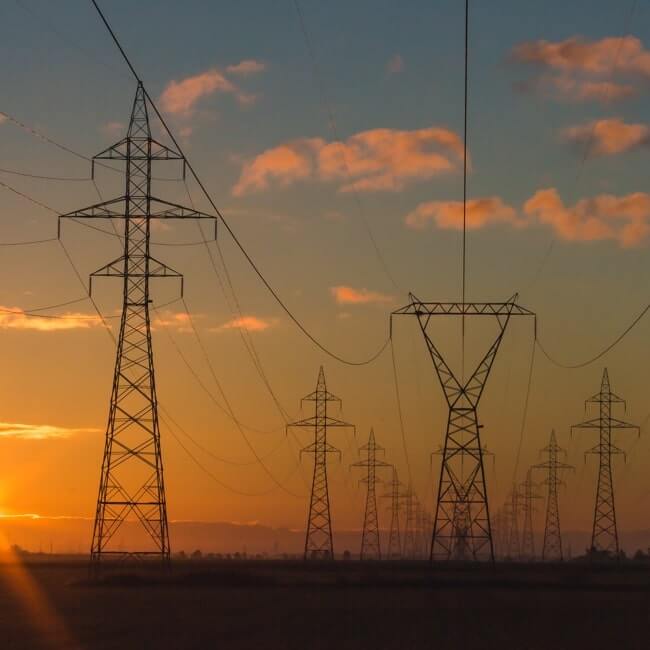How China entices Central American countries

Central American countries such as Honduras, Nicaragua and El Salvador are increasingly keen to deepen ties with China, which can offer infrastructure and economic development.
Enrique Dussel Peters, a China expert at Universidad Nacional Autónoma de México, tells BNamericas how Beijing approaches these countries, the problems and payoffs this creates, and why regional leaders must learn to handle superpower tensions.
BNamericas: What’s the substance of China’s relations with Central America?
Dussel: China has a globalization proposal with its own characteristics, where infrastructure projects play a particularly important role.
China has dedicated a particular effort to Latin America. It has supported the creation of the Celac-China forum, and a vast portfolio of instruments with hundreds of very specific proposals, ranging from terminals or nuclear plants to issues of national security, and in between there is culture, technology development, education, technology transfer, academic issues, and so on.
So Latin American countries, even those that do not necessarily have a diplomatic relationship with China but are Celac members, can choose to prioritize these cooperation instruments.
BNamericas: Isn't that a purely commercial approach then?
Dussel: No, there are hundreds of instruments. And if one reviews the work programs of the Celac-China forum since 2015, we can see that they include tourism, culture, among other topics, so it is not just an economic perspective, or infrastructure projects or financing.
Today, China offers bilateral instruments, such as their relationship with Nicaragua; or at a regional level, via Celac; or with the whole of Latin America; or even multilateral in other forums beyond the Latin American ones. These initiatives are not exclusive. It is not that El Salvador can only make use of the bilateral instruments it has developed; El Salvador can make use of bilateral, regional and multilateral instruments.
BNamericas: Do these instruments have broader application than the ones offered by the US and others?
Dussel: They are highly interesting options for Central America. They open windows to which historically and until recently these countries had no access, neither with China nor with other countries.
It is also important to point out that diplomatic recognition by several Central American countries toward China is recent and that the implementation of these cooperation instruments has been slow.
The relationship in the economic sphere and trade has been more dynamic, including some recent investments by China, compared to infrastructure projects and financing. Infrastructure projects have a long design period, which can take years. In Central America, they have developed little by little, but regarding trade and investment, the processes have been faster.
BNamericas: So China’s penetration in Central America isn’t that profound yet?
Dussel: At the moment, the amounts from China to Central America have been quite discreet. Through 2021, we had registered 15 investment transactions and no announcements. This is very little: US$1.5bn. But a clear upward trend is emerging that will surely continue to grow. It is relatively small with respect to US and EU investments, but it is very dynamic considering that it comes from a country without significant previous investment presence.
BNamericas: Which Central American countries could be of most interest to China?
Dussel: China does not exclude any country. Instruments that have been developed regionally are available to all countries. The use of those instruments depends on the counterparties, not on China. China offers this portfolio and if Nicaragua, El Salvador, Costa Rica want to make use of some instruments or others, that depends on them.
BNamericas: What do Central American countries gain by establishing relations with China?
Dussel: First, it allows them a certain independence from the US if [they] don't reach agreements or financing with them or the EU. In Costa Rica, trade with China has been particularly dynamic in the last 10 or 15 years. The expectations when the free trade agreement with China was signed were to go far beyond trade, and be able to attract Chinese investment and financing in a more significant way. The results were much more disappointing for Costa Rica, though, and it is up for debate whether this is the responsibility of the Costa Rican or the Chinese side.
BNamericas: Will Central America have to play both powers?
Dussel: Latin America and Central America cannot close their eyes to China nor the US. They are the two big economies that are in confrontation and have a lot of fights. Third countries will have to deal with both, without marrying one or the other.
BNamericas: Won't this generate political tensions?
Dussel: Of course, that can generate pressure, such as the time when former US foreign minister Mike Pompeo demanded a practically exclusive relationship from the Caribbean and Central America: “You are either with us or against us and with China.” And that creates difficulties particularly for smaller countries. Surely these pressures will continue from different political groups and various interests from the US, and one could even imagine in the future from China.
BNamericas: What do you make of the theory that China uses Central America to pressure the US?
Dussel: It's not a theory, it's a fact. China is having a massive presence in what was historically called the US backyard. This presence is growing significantly, and this raises a lot of suspicion in Washington.
I believe this situation generates all kinds of pressure regarding academic exchange, financing, defense issues, national security. Yet, the US does the same in Asia. There is a very dynamic US presence in countries like Vietnam, which also generates pressure in China and so on. Since 2017, we have been in a period of open confrontation between the two great world powers, to which we will have to get used to.
BNamericas: What regional projects could China be interested in?
Dussel: Investment and infrastructure are two different issues. Why is China particularly interested in infrastructure? Because it has experience. In the last 40 years, China has achieved a very significant increase in its standard of living through infrastructure projects, and in these 40 years, China has developed its banking and financial system, offers infrastructure financing, but also dramatically improved infrastructure technology services.
Today China offers wireless networks along highways, in hospitals, schools, whatever infrastructure you can imagine based on the development it has achieved. These infrastructure projects are very competitive compared to other Western, European, or US companies.
China is interested above all in the long-term relationship with countries. A common dilemma, however, is that with different governments in Latin America, the relationship comes and goes. An example is Brazil: Jair Bolsonaro enters and there are four years in which the relationship between the two countries cooled. Lula enters and the relationship improves. [China] would like a much more constant relationship in the long term, but this is not always achieved.
BNamericas: What’s China's long-term objective in Latin America?
Dussel: China is relatively far from Latin America and recognizes the region’s special relationship with the US. The region’s relationship with China is different from that of Asia and China, which is deeper. The objective would be to deepen its presence, as well as learn from experiences in Latin America. It depends on the counterparts, how far they want to go.
BNamericas: Could China’s regional influence exceed that of the US?
Dussel: To answer this question, a fine-grained approach is needed, as imports and exports are different from financing, from infrastructure. In the commercial sphere, surprisingly, China has become the main trading partner for many Latin American countries such as Brazil, Argentina, Chile, and Peru, displacing the EU, the US, and others.
However, China’s presence is still relatively small, dynamic but small. In some cases, it is even non-existent. My assessment is that Chinese presence in 2023 is qualitatively inferior to that of the US.
Relations between the US and Latin America have sometimes been very conflictive, involving military coups or pressure from US embassies; it has not been a romance, but qualitatively speaking, US presence continues to be immensely superior to that of China.
Subscribe to the leading business intelligence platform in Latin America with different tools for Providers, Contractors, Operators, Government, Legal, Financial and Insurance industries.
News in: Infrastructure (Costa Rica)

Costa Rica construction chamber sounds the alarm over deteriorating infrastructure
The chamber has called on the authorities to urgently improve the state of the country's public infrastructure.

The World Bank will improve resilient infrastructure and services in Costa Rica
The $350 million Climate Resilient Recovery and Territorial Development Project helps address damage caused by recent disasters.
Subscribe to Latin America’s most trusted business intelligence platform.
Other projects in: Infrastructure
Get critical information about thousands of Infrastructure projects in Latin America: what stages they're in, capex, related companies, contacts and more.
- Project: Concepción - Chiguayante Road Connection Expansion (stage 2)
- Current stage:

- Updated:
1 week ago
- Project: Rurrenabaque - Riberalta Highway
- Current stage:

- Updated:
1 week ago
- Project: Catatumbo Train
- Current stage:

- Updated:
1 week ago
- Project: Yucumo - San Borja highway (North West corridor)
- Current stage:

- Updated:
1 week ago
- Project: Boyacá Transversal Improvement (Puerto Boyacá - Otanche - Chiquinquirá)
- Current stage:

- Updated:
1 week ago
- Project: Dredging of Access Channel to the Port of Rio Grande
- Current stage:

- Updated:
1 week ago
- Project: Argentina - Chile Bioceanic Railway Corridor: Stage 2, North Patagonian Train (Rehabilitation of the Roca Freight Railway)
- Current stage:

- Updated:
1 week ago
- Project: CONCESSION: Río de Janeiro (RJ) - Governador Valadares (MG) Highway System (BR-116/465/493/RJ/MG)
- Current stage:

- Updated:
1 week ago
- Project: Conviction Enforcement Center for Men
- Current stage:

- Updated:
1 week ago
- Project: Valle del Cauca suburban train
- Current stage:

- Updated:
1 week ago
Other companies in: Infrastructure (Costa Rica)
Get critical information about thousands of Infrastructure companies in Latin America: their projects, contacts, shareholders, related news and more.
- Company: Edica Ltda. (Edica)
- Company: Navarro y Avilés S.A. (Navarro y Avilés)
-
The description contained in this profile was extracted directly from an official source and has not been edited or modified by BNamericas researchers, but may have been machine...
- Company: Van Der Laat y Jiménez S.A. (Van Der Laat y Jiménez)
-
Van Der Laat and Jiménez S.A. develops construction projects, including public and health services, industrial plants, buildings, hotels and resorts, road infrastructure and sho...
- Company: Coriport S.A.
- Company: Dirección General de Aviación Civil de la República de Costa Rica (DGAC Costa Rica)
-
The General Directorate for Civil Aviation (Dirección General de Aviación Civil, DGAC) of the Republic of Costa Rica, under the Minstry of Public Works and Transport, was establ...
- Company: Consejo Nacional de Vialidad (CONAVI)
-
Consejo Nacional de Vialidad (CONAVI) is an organization of the Costa Rican government responsible for overseeing the planning, administration, financing, control, and maintenan...
- Company: Constructora Hernán Solis S.R. Ltda (H Solís)
-
Constructora Hernán Solís S.R. Ltda. (H Solís), based in San José de Costa Rica, is a firm founded in 1963 by the Greek entrepreneur Hernán Solís, which is aimed at the construc...
- Company: Ministerio de Obras Públicas y Transportes de la República de Costa Rica (MOPT Costa Rica)
-
Costa Rica's transport and public works ministry (MOPT) was established in 1860 for the planning, coordination, regulation, control and inspection of the transport sector. Headq...
- Company: Constructora Meco S.A. (Constructora Meco)
-
Costa Rican construction firm Constructora Meco S.A. offers a range of services, including the carrying out of earthworks and the construction of highways, commercial infrastruc...




